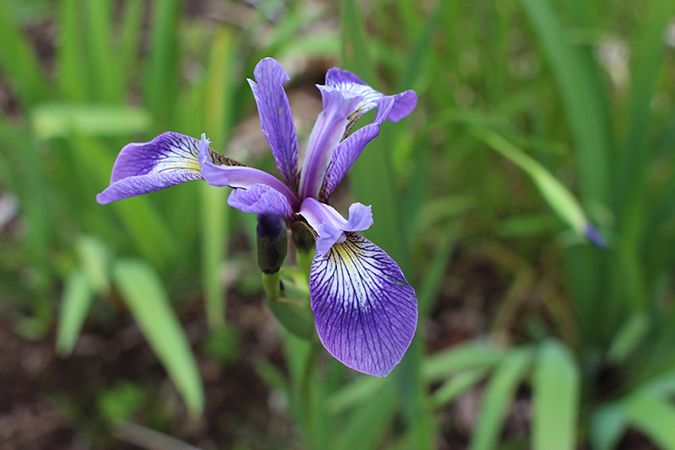Native Plant Nursery
Our native plant nursery is key to our restoration efforts.
Native plants are perfectly suited to our climate. They sustain our wildlife and are beautiful. We propagate and grow over 130 species of native trees, shrubs, wildflowers and ferns in our nursery.
The nursery was started as a way for us to help restore diversity to our forests. It is now central to our work in riparian zone enhancement, school ground naturalization, shoreline stabilization, erosion protection and landscaping. We also sell plants to the public, to be used around homes and private woodlots. The sale of plants to the public is an important fundraiser for our project, with the added benefit that every plant sold is a new seed source helping to restore some of our rarest species.
The nursery is a wonderful teaching space for our camps, courses and free events. To learn more about Prince Edward Island's native species, visit our Native Plant Species page.

Our Plants
In 1991, we began growing native plants with a handful of acorns and a few bags of birch and ash seed we had collected. By 1994, we had thirty different species of native trees and shrubs, a few of which were very rare, including ironwood, witch hazel, and hobblebush. Today, our four-acre nursery is full to the brim and has over a dozen of the rarest species. Collecting new specimens, improving our propogation techniques and sharing this resourse with the public are keystones to our project.
Our trees and shrubs spend as little time as possible in bags or pots. By growing plants in rich soil, and transplanting or root pruning our stock each year, we ensure that they develop a robust and healthy rootball. Healthy roots mean that our plants are able to gather lots water and nutrients after they are planted and will quickly adjust to their new home. We love these plants and are determined to grow the healthiest specimens possible.
Nursery Layout
The nursery is a constant work in progress. We don't use any chemicals, which means that we rely on careful planning and old-fashioned elbow grease to control weeds and pests. We plant soil-enhancing cover crops such as winter rye, buckwheat and clover when areas are not in use and use large amounts of compost and manure to increase soil fertility.
Protecting our plants and seeds from animals has been challenging. We use cages to protect seedlings, which are especially delectable to the local mice and hares, and stratification boxes to protect our acorns, hazelnuts, and butternuts over the winter. Rare species like Ironwood are wrapped in the fall to protect them from being chewed.
Raised beds are perfect for small seedlings as they warm up quickly in the spring and help with weed control. Tucked beneath a stand of old-field white spruce, we have a section that nurtures our shade-loving plants, such as young eastern hemlock and Dutchman’s breeches. Raised beds in the sun are perfect for our other wildflowers, which are incredibly valuable to pollinators. While we do our best to protect our young seedlings from our animal friends, it is also important to us that the nursery supports and provides food and homes for as many kinds of wildlife as possible. Every year, we have tree swallows return to our nest boxes, song sparrows ground-nesting among the trees and monarch butterflies thriving on our swamp milkweed, to name just a few.
Two wetland areas have been developed, extending our ability to grow wetland plants. These rare and beautiful species include pitcher plants, sundew and water-filtering cattails. These areas are kept wetter than other parts of the nursery and use a mixture of soil, compost and peat moss to help retain moisture.
Propagation
Most of our propagation techniques have been developed through trial and error. Our most common methods include direct seeding, rooting cuttings and transplanting. Some species just want to grow, while others are a challenge. Learning to collect seed at the right time, figuring out how best to clean and stratify the seed and then creating the right conditions for the seeds' germination, can be a complex process that takes years to figure out. To complicate matters, some seeds can take up to three years to germinate, which requires lots of patience and good record-keeping. Once germination takes place, the careful process of transplanting and care begins. We extend the growing season with a greenhouse. This controlled environment allows us to experiment and cultivate species that require special attention.
Finally, each year we travel the province looking for seeds from the best and healthiest native plants, as well as gathering seeds from plants we have grown on the property.
